New book Orchard: A Year in England’s Eden takes you deep inside a magical world
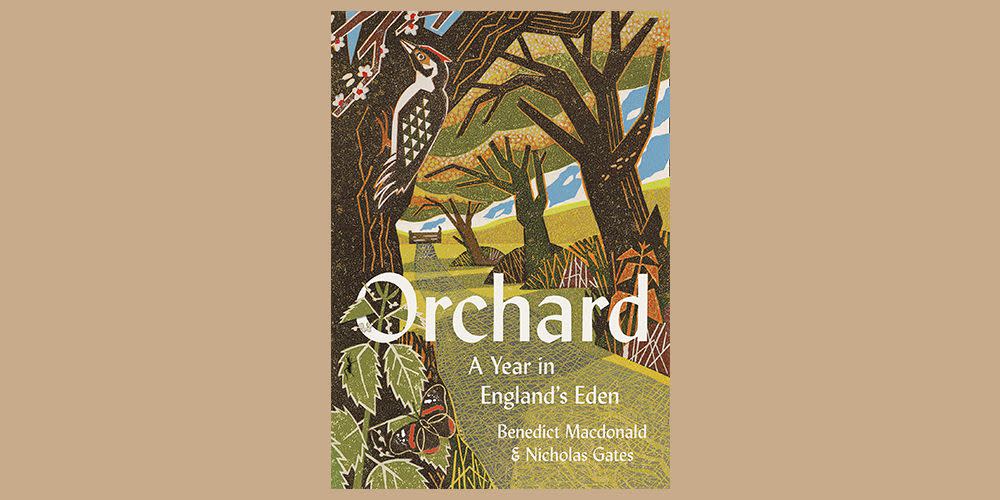
As part of our Celebrate Summer virtual event (8th & 9th August) naturalist, author and wildlife producer Nick Gates will be taking us pond dipping and bug hunting in his own garden in Bristol, where he has spent the last six years creating a miniature nature reserve. Nick will introduce us to the many species that now inhabit it.
When? 10am Saturday 8th August JOIN EVENT HERE
Nick and his friend Benedict Macdonald are also celebrating the release of their new book Orchard: A Year in England’s Eden by Benedict Macdonald and Nicholas Gates (William Collins, £20). Here's an extract which tells the story of a garrulous jay, the lifelong friend of the ancient oak.
You have to watch your head in the orchard in autumn. Falling apples are the least of your concerns. Huge snags can, and do, fall from the oldest fruit trees. These, in turn, are mere twigs compared to the twisted, scarred limbs of oaks that fall from time to time. But another sound you become conscious of, if sitting for some time in one place, is the soft but certain ‘pshhtt’ of falling acorns. Many of these tumble from the magnificent aged giants in Oak Orchard. Other acorns, however, fall from a clear blue sky! The orchard’s master forester is hard at work.
Silent and furtive throughout the late summer months, our local ‘wood-screechers’ (the Welsh name being Ysgrech y Coed) ramp up the volume. Of all the birds in the orchard, it is only in recent years that we have come to cherish and appreciate the importance of the jay. Where bird populations are already tiny and fractured, nest-raiding jays can become problematic for those species – but in the healthy, food-rich ecosystem of the orchard, we have never found jays to affect any of the smaller birds, such as spotted flycatchers, in the long term. Nests are raided, chicks are eaten, but the jays here are kept in check
as well, and must avoid at all costs the blood-red stare of the goshawk. Far from a menace, the jay is a cornerstone species; a vital life force in the world of the orchard.
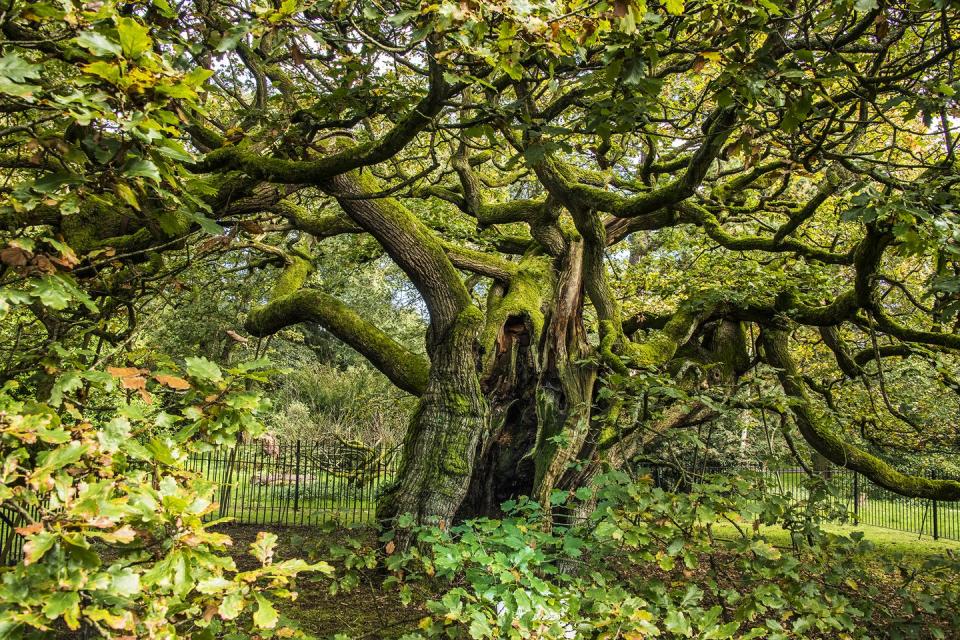
Garrulus glandarius, the ‘chattering acorn gatherer’, is a lifelong friend of the orchard’s oaks. At this time of year, you can sit and soak in their salmon hues and azure flashing wings as they strip their way through the crown of the Ancient Ones in Oak Orchard. It’s only when you set up a camouflage hide, a telescope, and lavishly scatter acorns on a fallen branch, however, that you get to watch these wary hoarders at work.
Head cocked as it lands, the jay looks sceptical. It’s as if someone has put down a large hoard of acorns in one place.
Soon, however, its base instincts get the better of its fiendishly smart brain. The jay swallows one acorn, then another, then another. It’s a little like watching rabbits disappear into a rather small hat. Like their North American cousins, Eurasian jays have evolved elastic, expandable throats – specifically for this reason. This allows them to safely store multiple acorns in their crop, ahead of making a single trip to stash their bounty away. The evolution makes perfect sense; having to take each of one’s shopping items away separately would be time-intensive and waste critical energy. Watchful of the small army of grey squirrels around it, my jay swallows four acorns. The fifth is the one that it keeps carried in its bill. This jay, it turns out, is a little above average. Jays will usually carry three acorns per trip – but the most impressive of their kind can carry up to nine. In a salmon-coloured flash, it bounds off across the golden apple carpet.
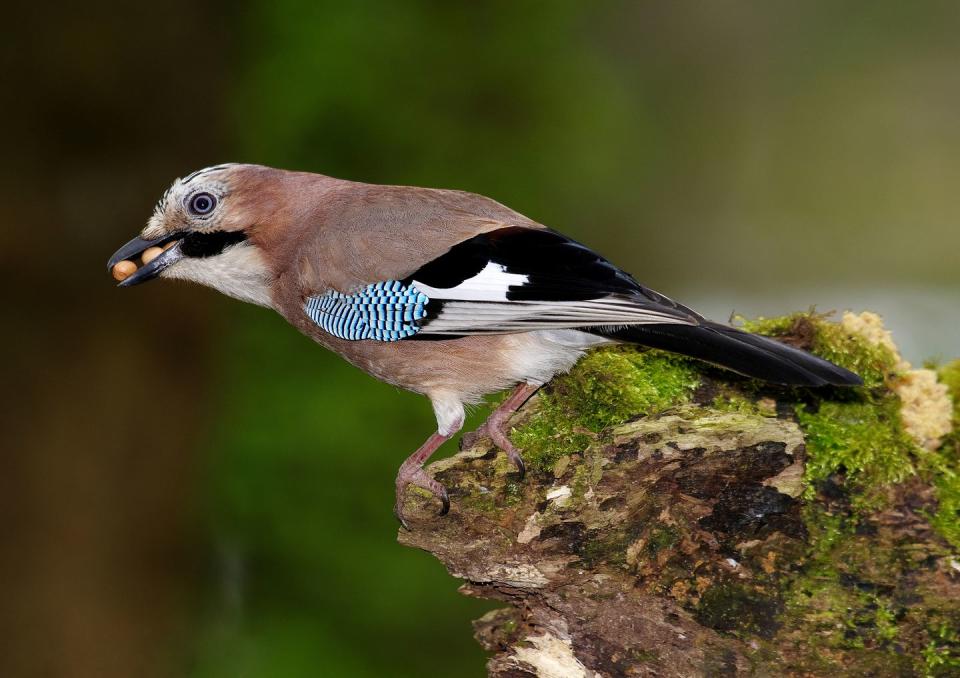
Animals that hoard are split into two general categories – ‘scatter hoarders’ and ‘larder hoarders’. We as humans are larder hoarders. Unless possessed of unusual social traits, we rarely scatter food at dozens of locations around our houses and gardens. Jays, however, take the opposite approach. While small larders have on occasion been studied, each individual jay – capable of storing five thousand acorns in the course of a winter – will generally cache these in a baffling range of different sites. With around ten jays, parents and young on the wing by October, this means that around 50,000 acorns will be stashed in and around the orchard each autumn. Some will be wedged securely in cracks in the bark, others buried in the ground (jays may have to dig through a foot of snow to get these out). It has previously been held that jays, being mere birds, forget about a lot of the acorns that they stash, while dropping others by accident. These, of course, are the acorns that can grow, over time, into oaks. But what if this, too, wasn’t an accident? What if jays didn’t forget?
Scientists curious about those ‘forgotten’ acorns have returned to watch what happens the following spring. Jays, they found, return to many newly planted oak saplings within their territories. They then actively defoliate the young oak leaves, carry them off and feed them to their newly hatched chicks. These nutritious fledgling oak leaves, known as cotyledons, are unique – jays do not take the young leaves of other species nor can their chicks digest the leaves of a mature oak. This fresh salad for their infants is harvested from the very trees grown from acorns cached the previous autumn and winter. In other words, rather than forgetting stashed acorns by accident, there is strong evidence to show that these avian geniuses leave them by design.
We humans often credit other animals with great intelligence only with extreme reluctance.
We now know that elephants can feel profound emotional connection to the graveyards of their kin, transmit messages seismically through the very earth itself, and detect distant lightning storms. We are just beginning to understand the depth of communication in killer whales, the memory of octopuses and the 20-year learning curve of one of our closest relatives, an infant orangutan. Jays, hunted almost to extinction by Victorian gamekeepers, have escaped our admiration rather more. Yet this hugely intelligent forester has been shaping the very landscape where we live and walk, with an eerie degree of foresight, for hundreds of thousands of years.
The actions of jays in scattering oaks has been proven to be far more valuable than the actions of foresters in planting them – all in one cluster, at one time. A Polish study in the Bialowieza Forest showed that oaks growing singly, scattered by jays over a wide area, have a much greater chance of survival than oak saplings planted in one place. It should indeed be obvious that no known living or historical animal has ever planted trees in neat rows. Oaks are designed to grow far and wide, reducing the species’ chances of early defoliation by mammalian herbivores. Jays are the only foresters to make this happen.
Every time you pass an oak pushing through a verdant hedgerow, protected by its thorns, be thankful for the jay. Oak trees and jays enjoy a symbiosis developed over millions of years. Writ large, the action of jays in the Malverns’ tree-rich landscape, where they are rarely hunted any more, shapes the leafy aspect of these softly wooded hills. The amount of new oaks in the landscape, pushing through dense blackthorn, growing on hillsides free from overgrazing, or bursting through bramble in the sunlit glades around the orchard, is a continuous signal of hope.
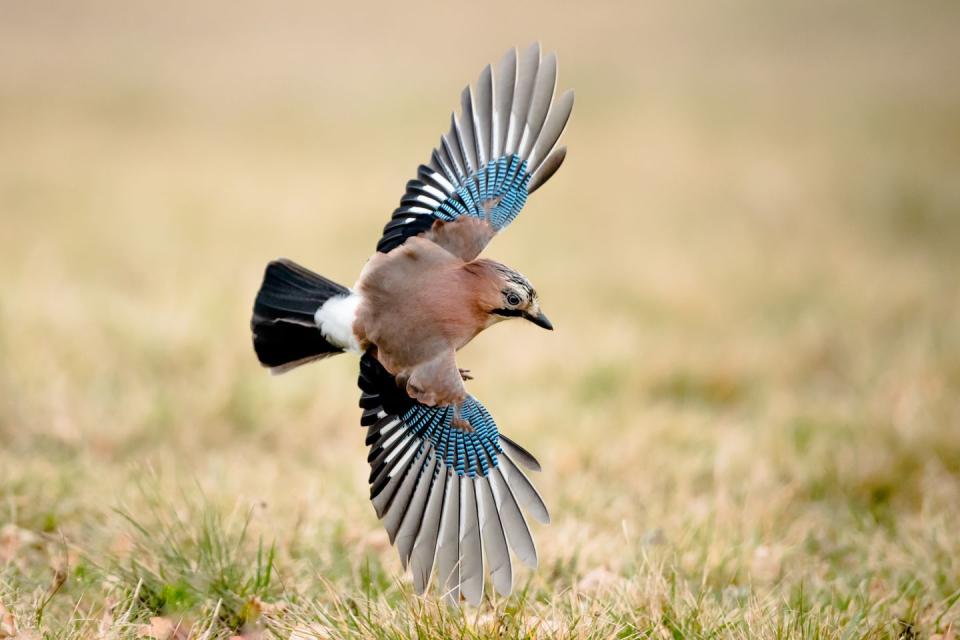
Indeed, looking around, you realise that almost every ancient oak in the orchard would, in fact, have been planted by a jay. The oaks are ancient hedge-markers, and they, too, would have grown through the dense blackthorns now long vanished from their shade. Because oaks grow best when protected by thorns, sky-dropped acorns, not human planting, would have allowed the acorn to drop into a tangle of thorns and, unreachable by cattle, grow through the hedgerow of that time – and out into the light.
Flapping overhead on rounded wings, jays are Europe’s premiere avian foresters. They should, in our view, be protected by the very best legislation that there is – because they are nature’s most effective means of reforesting our island.
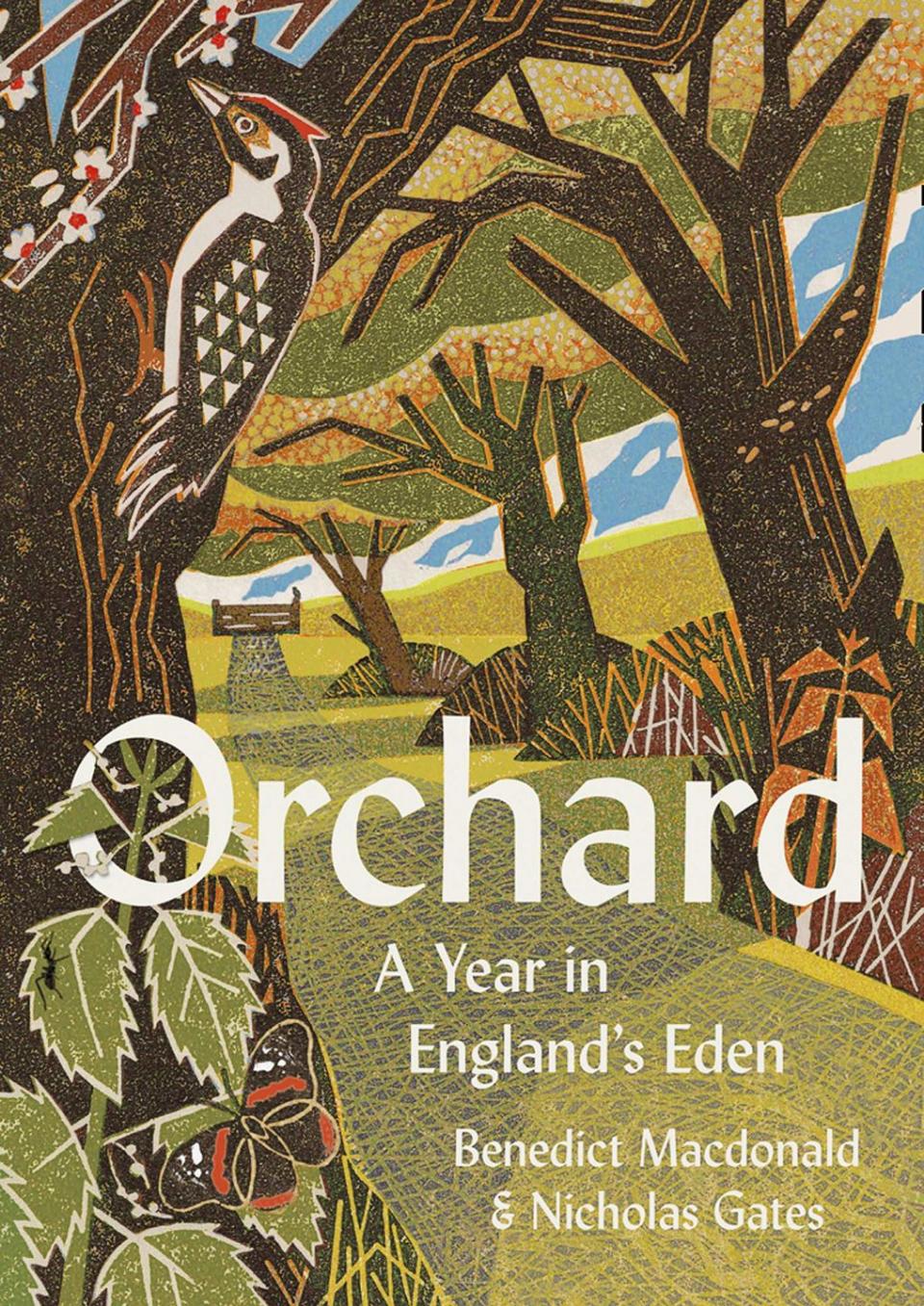
In need of some positivity? Get Country Living delivered directly to your door every month! Subscribe to Country Living magazine today and get 6 issues for £15.
SUBSCRIBE HERE
Like this article? Sign up to our newsletter to get more articles like this delivered straight to your inbox.
You Might Also Like

